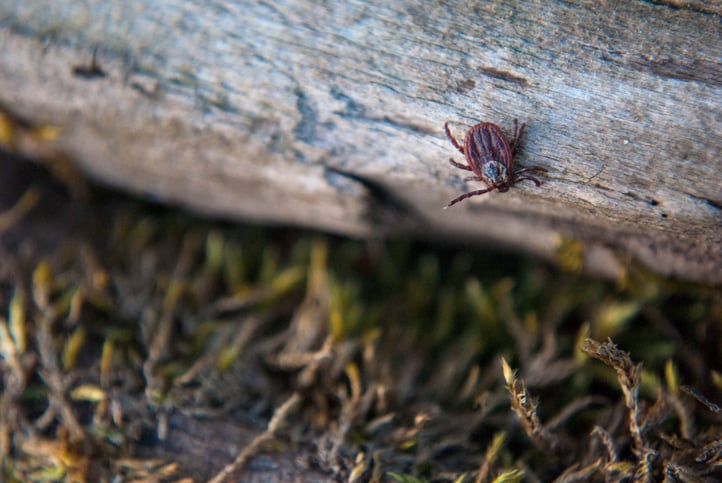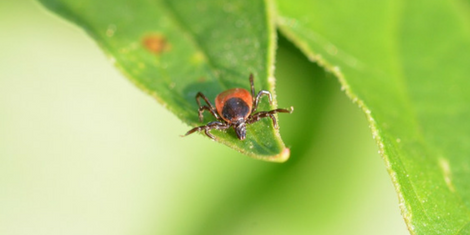
There are people out there who are scared of bears, sharks, alligators... my partner even has an irrational fear of horses. The bigger the beast, the scarier it is. That's usually how it goes.
But what about something you can't always see from a distance, that literally inflates with blood after puncturing a tiny hole in your skin? And what if, after piercing said hole, they can send a disease swimming through your bloodstream?
Not sure about you, but that scares me a whole lot more. You're more likely to cross paths with a tick than you are an anaconda, so it's a fairly rational fear to have.

Ticks can be found everywhere, from your leisurely walk in the woods to your very own backyard. And seeing as they can't survive too long without a blood meal, they're always waiting around somewhere, with an I'm-so-freakin-hangry kind of motivation to hunt you down.
Let's discuss how, exactly, they do that.
How Ticks Hunt For A Blood Meal
Ticks can't fly or jump. Instead, they linger around on tall grasses, leaves, or wood piles, thinking about this and that. You might brush up against them by accident, but that wasn't exactly an accident on their behalf. They've made a calculated effort to be there... waiting for you.
Just like mosquitoes do, ticks have a sensory organ that picks up on chemicals and odours in the air, including your breath. C02 gets ticks excited just like it does for mosquitoes, and that very scent lets them know a potential host is near.
I don't know about you, but when I'm hungry and I know food is nearby... I'll pick up the pace. But if my life is on the line? I'll Usain Bolt my way to where my next meal is, quick smart.

Now, we're not saying ticks possess the speed of a Jamaican sprint team, but they do have numbers and they are motivated, so coming into contact with a tick isn't a random occurence.
Once they latch on, they'll either start feeding right there or they'll move around to find a section of skin that's easy to drill a little hole into.
All the while, you could be completely clueless as to what's happening.
What To Do If You Find A Tick On You Or Your Pet
When you get home from a tick-prone area, it's wise to check yourself as well as your kids and pets for potential tick bites.
In most cases, it takes around 36 to 48 hours of attachment for Lyme disease to be transmitted, so if you discover an attached tick, it’s important to carefully extract it as soon as possible.
RELATED > How To Protect Pets From Tick Bites
Using a pair of clean tweezers, carefully grasp the tick as close to the skin as you can. Pull slowly upwards, but without twisting or crushing the tick. Once it's completely out, disinfect the area. If you can't get it out completely, make sure you see a doctor straight away.
For more info on tick control, click below to download our free eBook. Plus, follow us on Facebook for more tick and mosquito control tips.



